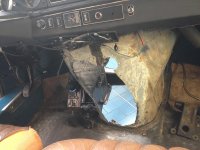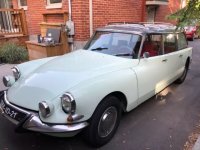It may be the first time this system failed in 57 years but I am not sure it has worked 24/7 over that time.Over 20 years of focused, determined, scientific, genius and mostly rational work.
You can't suggest that the modern computerised ones are any better.
We are looking at a 65 year old design, and a 57 year old example that had failed for the first time.
Your modern computerised version is sometimes giving trouble at 5 years old.
The computer still relies on signals from sensors which detect mechanical things,
And the engineering is not good enough.
For all your plastic pizzazz, zoom zoom advertising, blinking lights and giant touch screens, you don't get more reliability, nor more driving pleasure.
This re-creation of a masterpiece by Sven is going to bring more joy to the world over the next 50 years, then any new car built this year, guaranteed!
So....... please don't suggest it's "too much"....... it's actually "enough".
Nevertheless, I admire the results and the design and the work that went into it, but I am sure if they had the digital technology available back then they would have preferred it. That said, a piece of wire in a pipe to control/regulate flow is simplicity genius but I think we can do better than that.
As for computers, they are just tools like the hammer in your toolbox. And just like with a hammer, it is all in the hand of the user. You can see people doing great things with a hammer and you can see people hurting themselves. Same goes for computers.
But my curiosity is more about how much of all that stuff would still need to be there if one moved to a computer controlled system. One thing is for sure, there would be massive weight and space savings, which has to be a plus in anyone's books. If you want to see what modern hydraulics tech is capable of, have a look on the utubes for Rotary SMP, a kiwi living in Austria who has just upgraded the hydraulics on an old Swiss CNC lathe. The result is a 75% weight saving and about as much space and the lathe is from the seventies, not the fifties. The modern modular (computer controlled) valve system used is just a work of art (not to mention the genius of the system design and the simplicity of service). As for reliability, I guess you can imagine given that the entire CNC manufacturing industry is using it. Citroen himself would probably be delighted to see it in his cars.
Last edited:



